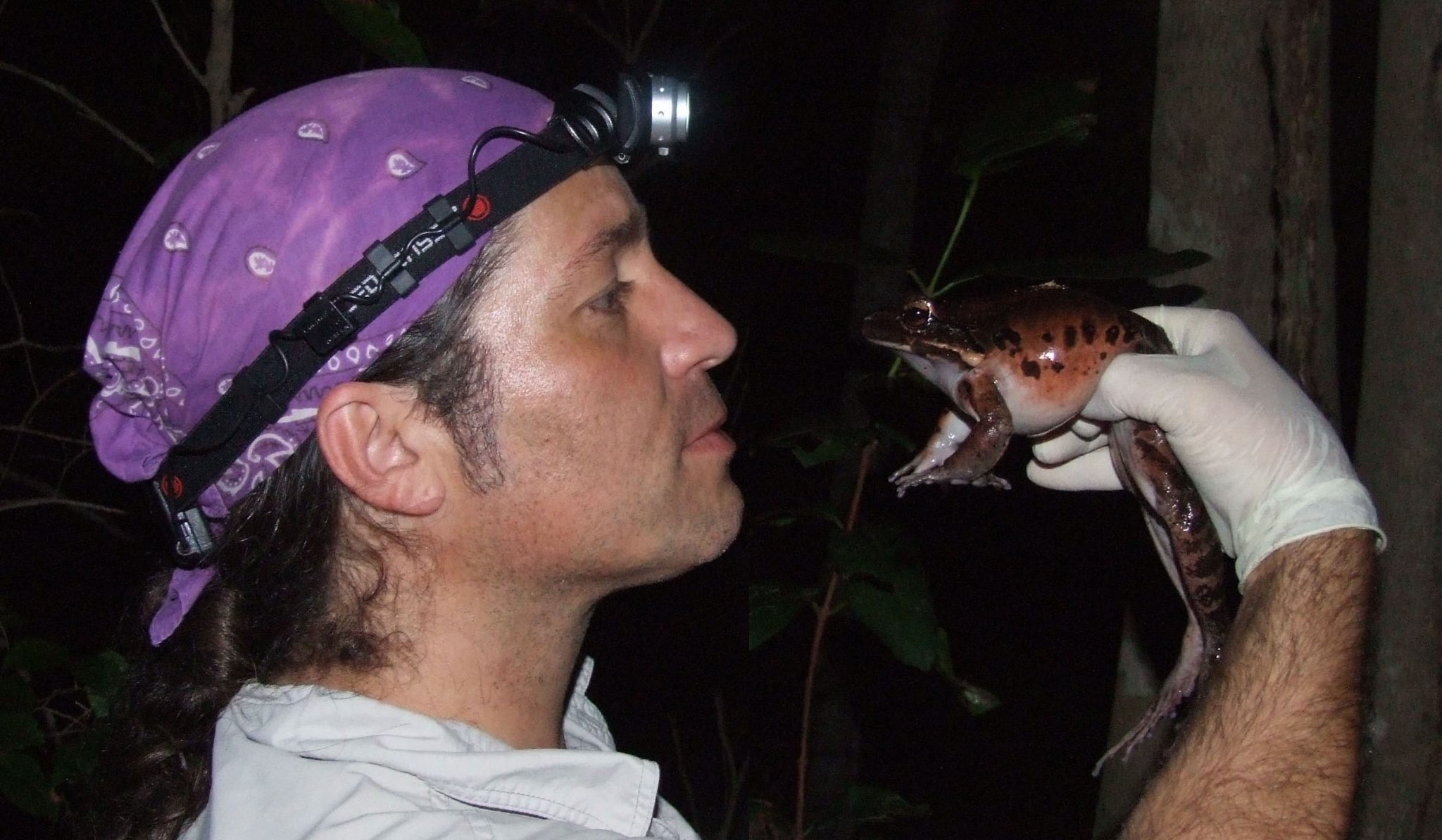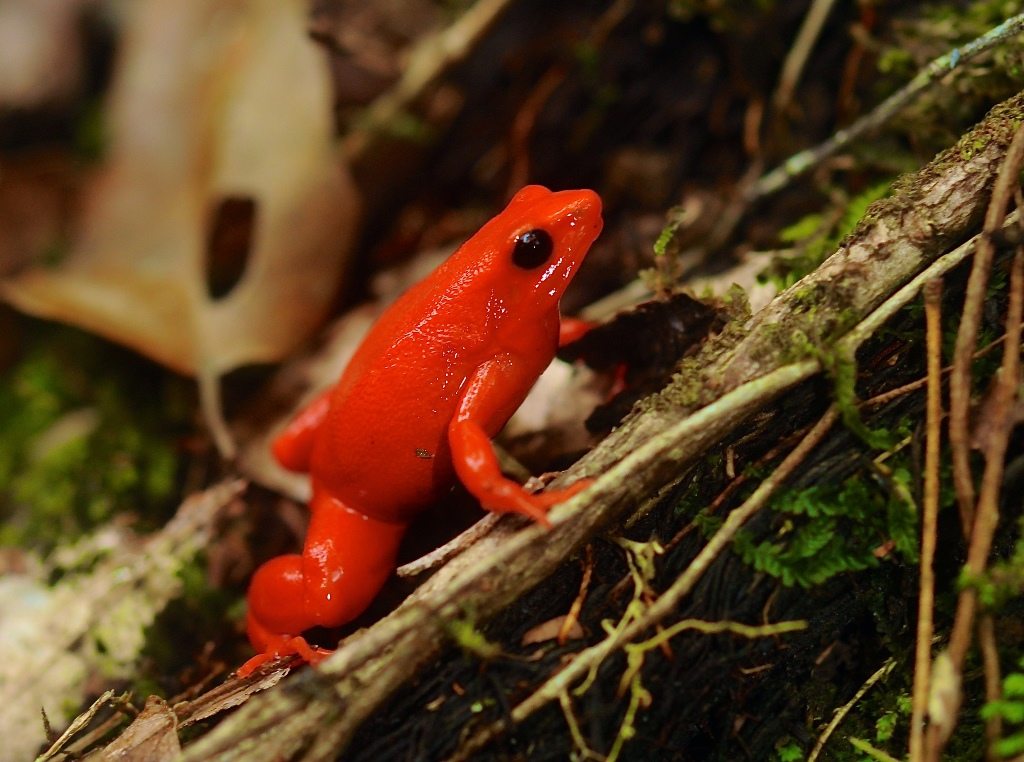Tag: Championing ecological research

I never know how it happens but I always manage to leave all the packing until the very last minute instead of having it all done on time and in a relaxed way when I am going on a field trip. So the night before I was taking my long flight to Madagascar-I was collecting equipment from around the zoo. From the Herpetological Department to the Aquarium… water pumps-marking equipment-bits for the filters and a never-ending list of gadgets related to amphibians and captive husbandry.
A very busy week of lectures-workshops-exercises and discussion is planned to take place in one of the hotspots of amphibian diversity of Madagascar-in the National Park of Andasibe/Mantadia. Thanks to the local NGO being based in the core area of the park-Mitsinjo-we’ll be in a unique place surrounded by 100 species of frogs.
Up to 30 participants on the course from all parts of the island of Madagascar will meet at Mitsinjo and we’ll run a very ambitious programme related to skills for the captive management of amphibians on the island. It is going to be the first time this programme will have been run in Madagascar although the Chester Zoo staff lecturing on this course have been involved with this type of course over the last six years in different continents.

I personally had the opportunity to be exposed to the magic of Madagascar during my early days of my data collection for the my PhD on the endemic fresh water turtle-Erymnochelys madagascariensis-on the northwest of Madagascar….but that was a long time ago – 14 years ago in fact… Since then the links with the island and the conservation initiatives have never ended and this project is going to be the most ambitious approach so far in terms of developing capacity in a country facing the imminent threat of the chytrid in Madagascar (one of the few places in the world that has not so far shown any outbreak of the fungus).
The challenge is enormous because there are 290 described species in Madagascar but if you speak with the taxonomists they’ll tell you there are probably up to 500. But they have not had enough time and resources to describe them yet. That means a current 4% of the world amphibian diversity and possibly up to more than 6%.
I am not going alone – Javier Lopez-our Head of the Veterinary Department who also has the same length of experience working in Madagascar – is coming too. We have years of experience working together running amphibian courses-in-situ and ex-situ conservation programmes as well as being exposed together to a real outbreak of chytrid and seeing how an entire population of a frog was disappearing not long time ago. Having the veterinary topics running simultaneously with the biological ones in ex-situ conservation is perfect.

There are a very few initiatives in country in terms of experience keeping and breeding amphibians. Only three centres have amphibians in Madagascar-the Parc Botanique et Zoologique of Tsimbazaza in the capital of Antananarivo and the Parc of Ivoloina in Tamamatave and Mitsinjo in Andasibe. Only the latter has large facilities-specialised equipment and dedicated staff for the captive management of the species. So we’re in a race against time to get a rich toolbox of techniques to keep and breed amphibians. And all before the chytrid arrives to the island…
04:00 AM-Taxi arrived. Short trip to Manchester airport and then a long 11 hour flight to Antananarivo. Each time I take this flight I feel a special excitement. Madagascar was my first exposure to real conservation-understanding the needs for species conservation from the roots. So I will always be in debt to Madagascar-its community and the unique wildlife.
The transfer to the small hotel in the capital went relatively quickly and with a short sleep I was ready next day to meet the rest of partners for this course. By mid afternoon I had met the team from Durrell and the co-chair of the Amphibian Specialist Group for Madagascar-Dr. Franco Andreone-with the majority of participants meeting in Andasibe National Park. We arrived quite late at the Parc so we just had time for a quick dinner and then straight to bed before a very busy week ahead.
There are lots of familiar faces amongst the participants. Some were involved in the chytrid workshop I was involved in last year but the family of amphibian specialists in Madagascar is also relatively small.
Immediately after breakfast the course started – and in a totally unique environment-surrounded by the forest and listening to the Indri lemurs calling around us. How you could anyone not be inspired by conservation in these surroundings? We even have brown lemurs that jump around in the closest trees-curious about all these presentations.

Each course is totally different and it has to be like that because each country has different challenges. The background in keeping amphibians is different and if you really want to see facilities developed afterwards you must start by developing equipment that is feasible to obtain in country and also possible to be repaired. One of the classic errors is to develop a programme with technology or equipment that is impossible to get in the country.
Most of the exercises and workshops will be orientated towards exploring alternative set ups and equipment that could be built and maintained in Madagascar such as external filters-hydroponic systems and rain chambers to recreate rain inside the terrariums.

The golden mantella- Madagascar’s most iconic frogHowever-experts fear that if the deadly chytrid fungus ever did strike-then up to 500 species endemic only to those shores would be gone for good. That’s why a trio from Chester Zoo and Durrell Wildlife Conservation Trust have helped create an action plan to try and protect all of Madagascar’s frogs…
Chester Zoo’s curator of invertebrates and lower vertebrates Dr Gerardo Garcia and head vet Javier Lopez-and Durrell’s head of conservation Jamie Copsey are travelling to Madagascar to implement a new strategy to protect its frogs from a killer fungus-which has devastated amphibian populations around the world.
They are leading a course designed to equip local conservationists with the skills needed to establish safety-net populations of amphibian in captivity-out of the reach of the deadly chytrid fungus should it ever wind up there.
Amphibians all over the world are being affected by the fungal disease-which thickens their skin and prevents the movement of fluids-causing a chance of heart failure.
Dr Garcia said: “Amphibians already face lots of threats-most notably from habitat destruction and alteration-however the chytrid fungus could be the last nail in the coffin. It threatens most of the wild amphibian species around the globe with extinction and it’s probably the first time ever that a disease has threatened to wipe out an entire class of animals.
“There’s a very real chance of a new epidemic here and that’s why it’s vitally important that careful-professional ex situ (captive) programmes are in place to protect against chytrid – it’s that big of a threat.
“On top of that-there are lots of unanswered questions about frogs in Madagascar full stop. Working with them in an ex-situ setting could reveal some vital information and help us understand how we can protect them in their own environment and how to restore wild populations-should it ever become necessary.”
Although 290 species of amphibian have been described in Madagascar-many more have been discovered and are yet to be named. More than 90% of these are endemic to the country. An introduction of chytrid fungus could therefore have a “devastating effect”.
Head of Durrell Conservation Academy-Jamie Copsey said:
“We already know that a number of the amphibians unique to Madagascar are sensitive to the fungal disease and so should chytrid fungus ever arrive-it could have a devastating effect.
“By working with local conservation organisations Durrell and Chester Zoo hope to exchange skills and increase the number of institutions within Madagascar with the capacity to establish captive populations that are most at risk from the disease.”
Dr Garcia added:
“We are determining how we can use locally-available materials-such as plastic bottles and sponges-to make cheap but effective alternatives to equipment we have at home.
“The aim is to establish locally-run and effective captive breeding programmes that will make a significant contribution to the conservation of Madagascar’s unique and diverse amphibian fauna.”
The Chester Zoo Act for Wildlife and Durrell team will be joined by amphibian experts from the ICUN Amphibian Specialist Group and Turin Museum. The course will be based at the Mitsinjo Amphibian Centre in a national park in central Madagascar – renown for being one of the world’s most bio-diverse areas.
Dr Franco Andreone-co-chair of the Amphibian Specialist Group for Madagascar-concluded:
“A great deal of ingenuity and imagination is being injected into conservation efforts in Madagascar by local organisations-in particular Mitsinjo who are a local community-based conservation group. This additional support from the likes of Durrell and Chester Zoo will now really help us to push these efforts on.”
EAZA (European Association of Zoo’s and Aquaria) have provided much of the funding.
Our team has been to the heart of the Gashaka Gumti National Park and filmed chimpanzees from one of the last remaining viable populations of Nigerian chimp in the world.
This video by Conservation Officer Scott Wilson is the perfect introduction to our work in Nigeria.
To find out more about our work with these amazing primates and how we’re acting for wildlife in Nigeria sign up for our e-newsletter.